Today the
girls of L'essenza di Firenze we bring to you an entry on the Florentine
gastronomy for which you will be able to do an idea to yourselves on the proper
typical meals from there.
In the
heart of the Florentine kitchen there are four fundamental ingredients: bread
(plane, without salt, good cooked with rind criquiente and of inside light);
extra-virgin olive oil, undoubtedly better also to fry, crane grilled, cow
chops to the Florentine one, roast or stewed with wine as the javalí, deer and
rabbit, and to finish the same wine. The restaurants Florentine serve Italian
specialties, not only the typical ones of Florence.
APPETIZER
This is the
most traditional appetizer served in the Florentine restaurants. The sausages
get ready in circle in a plate and adorned with salad. Served often with the
thick bread slices in a basket. The best to drink with these cold meats is a
young Chianti, as that thing about "Colli fiorentini".
Pinzimonio
- Vinaigrette Florentine kitchen
 The
pinzimonio (vinaigrette) is an excellent aperitif and it is possible to change
according to the period and the availability of the vegetables. The success of
this simple and tasty plate depends on two fundamental elements: fresh
ingredients and, topcoat, virgin extra olive oil of the hills Tuscany. The
vegetables are dunked in a small bowl that contains the oil, the salt and the
pepper and hangovers eat up.
The
pinzimonio (vinaigrette) is an excellent aperitif and it is possible to change
according to the period and the availability of the vegetables. The success of
this simple and tasty plate depends on two fundamental elements: fresh
ingredients and, topcoat, virgin extra olive oil of the hills Tuscany. The
vegetables are dunked in a small bowl that contains the oil, the salt and the
pepper and hangovers eat up.
The bread
slices lightly toasts with on the liver, done this way: livers of chicken,
capers, anchovies, mixed and batters with the butter. This sauce originally was
called 'peverada' and it done using the saffron produced in the field about the
city.
The broad
beans is cooked in salt water with garlic and wise person, it served by the
tuna fish and flavored with oil. This plate is suitable as entremás, or like
main course that the entremás or the pasta continues, but also it can be served
like practical and rapid lunch. It makes use perhaps with bread curruscante or
integrally.
This plate
collaborates generally to November, when the olives have been gathered and does
the new oil to him. He eats up obviously the whole year, but in other periods
there lacks this sharp flavor typical of the new oil. In the summer you can
finish off the crostini with the sliced tomatoes and in winter, the 'fettunta'
is the base of a well-known traditional soup like "soup Lumbarda".
Baccelli
and pecorino - Broad beans and cheese Pecorino
A simple salad of broad beans and of buckets
of Pecorino, soft and fresh cheese flavored with oil, salt and pepper. It can
be an excellent main course, especially if you have already eaten the first
substantial plate.
THE FIRST
PLATES
If you ask lasagne in a restaurant in Tuscany
will serve something similar to him to this description. Layers of pastas,
sauce of meat and béchamel fresh air with cheese with on a spraying of
parmigiano, warmed across the stove (it must be tanned lightly) and served by
more grated parmigiano. If the ingredients include fresh vegetables, the wine,
the ham and the beef, insurance that it will be a lasagne like you it has never
tried earlier.
The toast
slices, they are dunked in the warm onions soup and there puts itself cheese
Groviera or grated or sliced Fontina and puts itself quite in the stove until
the cheese melts and brown / gold turns into color.
Ravioli nudi - "naked" Raviolos Florentine kitchen
 Raviolos with a spinach filling, ricotta,
eggs, Parmesan grated, flour and a bra of nutmeg. The most suitable sauces for
this plate are a tomato, wise person and butter or Florentine sauce of meat.
This change, without pasta around, of the raviolos is known as gnudi (nudes) in
Florence, which is a dialectal corruption of the ignudi, term of the Renaissance.
Raviolos with a spinach filling, ricotta,
eggs, Parmesan grated, flour and a bra of nutmeg. The most suitable sauces for
this plate are a tomato, wise person and butter or Florentine sauce of meat.
This change, without pasta around, of the raviolos is known as gnudi (nudes) in
Florence, which is a dialectal corruption of the ignudi, term of the Renaissance.
Pappa to the pomodoro - Bread and soup of tomato Florentine kitchen
 The
precursor of this plate was called panunto or the pancotto and it did not have
any vegetable. The original recipe was in fact without the tomato, like this
date long before the discovery of America and of the arrival of the tomato in
Europe. The ingredients were therefore simply a bread, oil, garlic and salt and
this tasty miscellany, it was used often to wean babies. The soup must serve
shinbone to itself, with olive oil 'drizzled' on.
The
precursor of this plate was called panunto or the pancotto and it did not have
any vegetable. The original recipe was in fact without the tomato, like this
date long before the discovery of America and of the arrival of the tomato in
Europe. The ingredients were therefore simply a bread, oil, garlic and salt and
this tasty miscellany, it was used often to wean babies. The soup must serve
shinbone to itself, with olive oil 'drizzled' on.
Dry
Cannellini of Jewish women cooked in lukewarm water for two hours on a very low
heat. Then they are cooked by pasta, a little of chili pepper and a little of
tomato. A warm meal for the cold winter days.
Ribollita - Vegetable and soup of bread
 This soup
toscana of bread is a classic and comfortable food; it is hard to think about
any platethat should collaborate more the city of Florence that the ribollita,
a classic soup of cabbage and broad beans that substance takes as the healthy
infusion of the bread toscano old.
This soup
toscana of bread is a classic and comfortable food; it is hard to think about
any platethat should collaborate more the city of Florence that the ribollita,
a classic soup of cabbage and broad beans that substance takes as the healthy
infusion of the bread toscano old.
The beef
soup has always been considered to be an excellent tonic to accumulate force
and energy. Eat it one winter evening, cold, adorned with sliced parsley, or
with delightful made taglierini of fresh pasta.
 Florentine kitchen Stracciatella - Soup of egg
beef Soup with almonds, eggs, Parmesan grated and breadcrumbs.
Florentine kitchen Stracciatella - Soup of egg
beef Soup with almonds, eggs, Parmesan grated and breadcrumbs.
To serve
very warmly, adorned with sliced fresh parsley. Florentine kitchen Pappardelle
sulla lepre - Pappardelle with hare In Florence, the pappardelle (big strips of
fresh pasta) are placed traditionally on the hares sauce and later they are
mixed gently to turn and not vice versa, according to this method.
Panzanella - Pachocha Florentine kitchen
 The success
of this extremely simple recipe depends on two things: the bread must be a
bread without salt, of the day or one day or two old men, and the rest of the
ingredients must be fresh and of top quality. There are several changes of this
recipe, which add several vegetables. In the past it was eaten by a dweeb,
watery wine called vinello or acquerello, fact soaking the grapes bunches to
the left after the wine that was fixing the water and later that was squeezing
them outside. A light, red, young wine is therefore the best thing.
The success
of this extremely simple recipe depends on two things: the bread must be a
bread without salt, of the day or one day or two old men, and the rest of the
ingredients must be fresh and of top quality. There are several changes of this
recipe, which add several vegetables. In the past it was eaten by a dweeb,
watery wine called vinello or acquerello, fact soaking the grapes bunches to
the left after the wine that was fixing the water and later that was squeezing
them outside. A light, red, young wine is therefore the best thing.
MAIN
COURSES
Trippa all fiorentina - Tripe to the
Florentine one
 Florentine
kitchen Bartolomeo Sacchi took its recipe of the Teacher Martino, "an
intestine main course... when it is cooked and served in the badges, asperje
well with the ground spices. Some of them also add the grated cheese". The
intestine makes use with boiled potatoes or with purée or, if you prefer, with
the broad beans cannellini in oil.
Florentine
kitchen Bartolomeo Sacchi took its recipe of the Teacher Martino, "an
intestine main course... when it is cooked and served in the badges, asperje
well with the ground spices. Some of them also add the grated cheese". The
intestine makes use with boiled potatoes or with purée or, if you prefer, with
the broad beans cannellini in oil.
The fried
eggs with pepper served with the bacon put in the end, the crushed potatoes or
the spinach crushed with the butter. The most important thing is to serve the
suitable bread to this plate - it must be as fresh as possible, with a crust
curruscante: the typical Florentine bread is perfect.
Stracotto - Restew Florentine kitchen
 The name of this recipe means really
"very made", and it is a good description, if it is thought to the
hard and tasty meat that it needs a length to cook slowly. Before the discovery
of the America and of the import of tomatoes, the stracotto was cooked by the
agresto - a sauce done with the crushed, sour grapes, he boiled and flavored by
the nails of smell, the cinamomo and the juice of a squeezed onion.
The name of this recipe means really
"very made", and it is a good description, if it is thought to the
hard and tasty meat that it needs a length to cook slowly. Before the discovery
of the America and of the import of tomatoes, the stracotto was cooked by the
agresto - a sauce done with the crushed, sour grapes, he boiled and flavored by
the nails of smell, the cinamomo and the juice of a squeezed onion.
In Tuscany, this one is considered to be a
good, solid and cheap meal for the family. It can be served in the lunch, like
appetizer or like main course. Other fillings, such as zuchini, onions or
potatoes can be used but only the omelette of the artichoke makes use with the
lemon.
A simple caserola
with several beef cuts, sometimes including half of the tongue of a calf, fresh
or salty (the salty tongue is a Florentine specialty). It is also an excellent
cold, with the green sauce.
In Florence one speaks about steak to say a
filet (bistecca) with the bone, a steak of good size cooked to the embers. For
the Florentine tradition a filet that is not cooked well is not just a garbage,
it is an entire heresía. The interior of the filet must be soft and succulent,
while the exterior must be fragile and have an aspect good - roast. The filets
must be nearly five thick, soft centimeters and of the best quality (meat
chianina).
The cut served pig, with a made fried sauce of
wise person, rosemary, garlic; wetted with the wine. The name comes from the
edge Latin American (a point, or thorn, refirido to the bone indented in this
cut of the meat) .
Bistecchine
I gave maiale - pig Chops Florentine kitchen
 In the
traditional Florentine kitchen, the pig is one of the meats more often
secondhand and therefore many recipes exist for the fresh and hardened pig. In
the field, in farms and villages, the slaughter and the preparation of the pig,
which happened generally at the end of the autumn, in November or December,
were always an important event in the seasonal calendar.
In the
traditional Florentine kitchen, the pig is one of the meats more often
secondhand and therefore many recipes exist for the fresh and hardened pig. In
the field, in farms and villages, the slaughter and the preparation of the pig,
which happened generally at the end of the autumn, in November or December,
were always an important event in the seasonal calendar.
Salcicce -
Sausages of Italian pig
 The
sausages fry in its own fat until they turn into brown / gold quite
superficially. The pig sellers (salsicce even), of fish and of dried cheeses,
call themselves pizzicagnoli Florence and the windows of its shops are a
temptation, full of delightful products. Fegatelli - Spikes of the liver Spike
of liver that are alternated by a sheet of laurel and a bucket of bread. It is
roasted in a spit on a wooden fire or in the stove and is even cooked quite
salad.
The
sausages fry in its own fat until they turn into brown / gold quite
superficially. The pig sellers (salsicce even), of fish and of dried cheeses,
call themselves pizzicagnoli Florence and the windows of its shops are a
temptation, full of delightful products. Fegatelli - Spikes of the liver Spike
of liver that are alternated by a sheet of laurel and a bucket of bread. It is
roasted in a spit on a wooden fire or in the stove and is even cooked quite
salad.
VEGETABLES
The chick-peas and the Jewish women are absolutely essential
ingredients in the Florentine kitchen, but in general they do not make use if
there are already vegetables (apart from the salad) in the table. A simple
plate that needs a heap of good olive oil, if it is possible, new.
The same
recipe that earlier but with tomatoes. These broad beans are delightful with
the meats and the boiled sausages.
Piselli novelli in casseruola - new Peas in caserola
 This is a specialty in spring the small soft,
sweet new peas are available. They are ideal not only with the stuffed rabbit
but also with roast meats of pig, cooked beef and piquant stew. The plate is
simply new peas with bacon and the seasoning.
This is a specialty in spring the small soft,
sweet new peas are available. They are ideal not only with the stuffed rabbit
but also with roast meats of pig, cooked beef and piquant stew. The plate is
simply new peas with bacon and the seasoning.  Vegetables
Eggplant, onions, asparagus, cauliflower, flowers of the zuchini and fungi, fry
in a mass and make use warmly.
Vegetables
Eggplant, onions, asparagus, cauliflower, flowers of the zuchini and fungi, fry
in a mass and make use warmly. Cavolfiore stufato - Cauliflower cooked
The
cauliflower is parboiled generally to reduce the smell that many find too
strong. It is cooked by tomatoes and of course a heap of garlic and of olive
oil.
DESSERTS
Florentine kitchen This light dessert is done
traditionally during the Carneval time, in February and asperja with a heap of
sugar on the cake before asperjar with another sugar or cocoa to do design. If
he likes very much the sweet, you can cut the cake in two and fill it with
cream, with cream or with chocolate, or of any other sweet filling he liked.
Schiacciata with l'uva - 'Loaf dies' with the grape
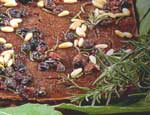 Grapes
sprayed with the sugar, inserted between two layers of pasta and drizzled with warm
oil with rosemary.
Grapes
sprayed with the sugar, inserted between two layers of pasta and drizzled with warm
oil with rosemary.
Florentine
kitchen Castagnaccio - Sweet of chestnut
Many
centuries the chestnuts were a part of the diet for the people who was living
in mountainous areas and topcoat for the poorest classes. In general they were
providing a cheap form of nutrition. The original, Florentine version, about
the castagnaccio also one knows as migliaccio (blood sausage) in some parts of
Tuscany.
The
profiteroles, originally, were fried rather that baked; the Florentine recipe
was introduced in France, where it was known like "ptes to chaud",
the "warm rolls". The profiteroles make use in most of the
restaurants of Florence.
Cenci, like
the schiacciata to the Florentine one, are the traditional cookies of the
period of Carneval. They are in the whole northern and central Italy, and have
diverse names as him region., for example, their names are to frappole Boloña
(stripes) and in Milan, chiacchiere it (squeaks).
Florentine kitchen Frittelle – Donuts
 In Florence these tasty little
"sweets" eat up traditionally on March 19, day of the banquet of
Santo José, and therefore also Father's day. They are excellent with a good and
sweet Holy Wine.
In Florence these tasty little
"sweets" eat up traditionally on March 19, day of the banquet of
Santo José, and therefore also Father's day. They are excellent with a good and
sweet Holy Wine. WINES
The Florentine wines and Toscanos are extremely famous in the whole world, thanks to the production area vinícola about the city of Florence, like the most famous: the Chianti. Two of the main noble families of Florence, Antinori and Frescobaldi, began the wines production 8 centuries ago, and between them, there was always a relation of extreme rivalry. In Florence you will be able to visit a "Snack bar" to enjoy a delightful tasting of wines or a "Wine cellar" to do a tour of the production of wine. In these places you will have the possibility of trying: Classic Chianti, Brunello di Montalcino, or the famous person Ornellaia. Nevertheless it is not necessary to enter a Wine cellar or a Snack bar to try the good wine, since in Florence you can find a "vinaino" (pequñas shops or stand where you can sip a glass of good wine accompanied by some aperitif) at home corner of the center of the city.












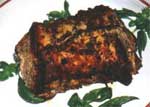
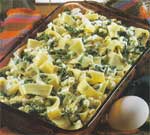


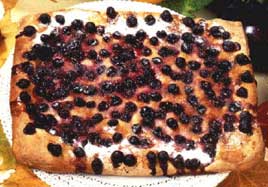
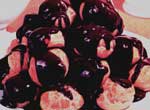

No hay comentarios:
Publicar un comentario